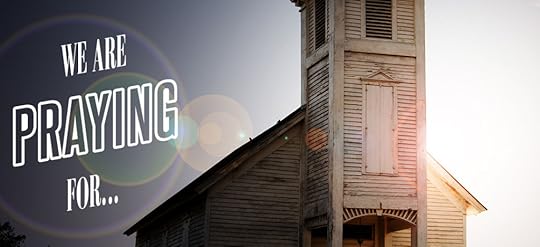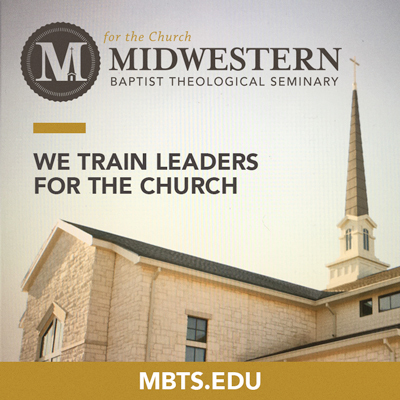Thom S. Rainer's Blog, page 119
June 10, 2019
The Healthy Church in 2029: Ten Major Changes in Ten Years

In the blink of an eye, ten years will pass. The pace of change is staggering, and there is no reason to believe the pace will slow down. In the comments on my blog post last week on growth rates among churches the previous ten years, a prescient reader asked me to look forward. “What do you think a healthy church will look like in 2029,” he asked.
I am grateful for his question. And though I can’t know with precision the shape of our churches in ten years, I do see some outliers and trends pointing us toward some key directions. Let me take those signposts and fast forward ten years.
Keep in mind, these changes are representative of the healthy churches in 2029. I may deal with the unhealthy churches in another post.
There will be a high intentionality of evangelism and gospel presence. We passed through the phase of programmatic evangelism without much impact. We are presently in the stage of non-intentionality, and our low-conversion churches reflect that reality. Healthy churches will be highly intentional about evangelism without it being program-driven.
These churches will be favored in the community. Someone recently asked me if most churches had a negative reputation in their communities. I told her no, that most churches have no reputation in their communities. The healthy church in 2029 will seek see the community as a place to serve and minister, rather than a pool of prospects to increase attendance. Look also for neighborhood churches to increase their impact in communities.
The majority of healthy churches will be multi-site, multi-venue, or multi-day. They will learn the lessons of the 19th century churches that moved worship services to 11 am to accommodate the farmers in an agricultural culture. As long as we don’t compromise biblical truths, we need to reach people where they are. More of them are working or unavailable on Sunday mornings. Will we move out of the 19th century to get to 2029?
The digital church will be clearly defined. Today, we debate about the digital church. Is the online church really a church? By 2029, healthy churches will have settled that issue. I anticipate the digital church will be viewed as a vital and complementary component to the in-person church.
Healthy churches will not have members holding the congregation back for sacred cows and traditions. The members of the healthy churches will embrace change rather than fight it. They will be more concerned about the gospel in the community rather than the style of music in the sanctuary. Change-resistant members will move to unhealthy and dying churches where they will exacerbate the sickness and speed the process of dying.
Most worship gatherings of healthy churches will be 200 and under. Even the large churches will have smaller worship gatherings; they will just have more of them. As noted in number three above, one of the biggest changes will be worship services on times and days other than Sunday morning.
Churches will feel more connected within networks rather than denominations. Churches will not have to choose between the two, but they will likely spend more of their energies in networks. Denominations will continue to be the doctrinal identity of many churches, but networks will become the functional identity. Denominations and their respective entities will be wise to create networks or connect with existing networks.
Healthy churches in 2029 will become more innovative in how they utilize their facilities. Most congregations don’t come close to utilizing their facilities effectively today. The lack of usage throughout the week is terrible stewardship. Many healthy churches will figure out ways to partner with community businesses and organizations with their facilities.
Healthy churches will be part of a groups revolution. Though the name will be different and the functions not identical, we will likely see a growth in the staff position that historically was called minister of education. This staff person, whether full-time, part-time, or volunteer, will become the key leader to seek to move as many members to groups as possible.
Corporate prayer will be central to the healthy church in 2029. Church leaders and members will figure out how to move prayer from the fringes of poorly-attended gatherings reading a list of who is sick, to powerful and Spirit-empowered corporate prayer. As culture turns more negative against Christianity and churches, we must have God’s power to respond.
With the obvious exception of biblical truth, churches must change or die. Where is your church today? Where do you think it will be in ten years?
June 9, 2019
Pray for Crossroads Baptist Church

Location: Hemet, California
Pastor: Kirk Beard
Weekly Worship: 10:20 AM, Pacific
Fast Facts: Crossroads Baptist Church successfully completed a merger of two churches more than two years ago. Since then, the congregation has been growing. Last year, the church welcomed more than 60 new members. God has truly blessed Crossroads Baptist. Please pray for their discipleship program that was launched in January. Since beginning this program, they have seen more than 40 people complete the course and begin discipling someone else. The multiplicity of the program has been an answer to their prayers and then some.
Website: CBCHemet.com
“Pray for . . .” is the Sunday blog series at ThomRainer.com. We encourage you to pray for these churches noted every Sunday. Please feel free to comment that you are praying as well.
If you would like to have your church featured in the “Pray for…” series, fill out this information form..
June 8, 2019
Notable Voices and the Week in Review: June 8, 2019

From Around the Web:
7 Steps to Move Members into Ministry — Chuck Lawless
How do you move members into ministry? Here are some basic principles we learned in a study published in my book, Membership Matters. That particular study is now dated, but our findings since then still confirm these steps.
5 Ways to Help Members Discover Their Spiritual Gifts — Juan Sanchez
While we tend to get hung up on particular gifts, in 1 Corinthians 12, Paul broadens the categories of gifts under the umbrella of the manifestation of the Spirit. Paul argues we manifest the Spirit when we serve one another (1 Corinthians 12:7). So, how do we help our members discover their areas of giftedness? Here are five suggestions.
Ditching Your Five-Year Plan — Katie McCoy
What happens when our plans fall through? When that hope we’ve been aiming at and working toward doesn’t materialize? When, because of our choices, someone else’s choices, or simply the sovereign hand of God, we look around and say to ourselves, “I didn’t sign up for this”?
The Problem with the One-Directional Preacher — Trevin Wax
As leaders, whether we have larger or smaller spheres of influence, we should want to get better at multi-directional leadership, and the way we will do so is by recognizing and resisting a number of temptations. Here’s the first.
This Week at ThomRainer.com:

The Faster Pace of Decline Toward Death of Many Congregations
We are seeing a marked decline in fast-growing churches and a marked increase in churches declining toward death…READ MORE

Ten Common Responses from Fired Pastors
While every situation has its unique elements, I see many commonalities in pastoral terminations…READ MORE
Six Cultural Pastoral Issues Where Pastors Often Struggle
by Thom Rainer and Jonathan Howe | Rainer on Leadership
http://media.blubrry.com/thomrainer/s3.amazonaws.com/rainerpodcast/Rainer-on-Leadership/Episode542.mp3
Six Unique Additions Some Churches Have Made to Their Worship Services
by Thom Rainer and Jonathan Howe | Rainer on Leadership
http://media.blubrry.com/thomrainer/s3.amazonaws.com/rainerpodcast/Rainer-on-Leadership/Episode543.mp3
Six Possible Second Jobs for Bi-vocational Revitalizers and Replanters
by Thom Rainer and Jonathan Howe | Revitalize & Replant
http://media.blubrry.com/revitalizereplant/s3.amazonaws.com/rainerpodcast/Revitalize-and-Replant/RR-Episode096.mp3
June 7, 2019
Six Unique Additions Some Churches Have Made to Their Worship Services – Rainer on Leadership #543

Podcast Episode #543
SUBSCRIBE:
iTunes • RSS • Stitcher • TuneIn Radio • Google Play • iHeart Radio • Spotify
Corporate worship is stale in many churches. These six additions can help re-engage your members during corporate worship and spur them to further ministry.
Some highlights from today’s episode include:
For a church to be a praying church, you have to be very intentional about how you lead the church to pray during corporate worship.
Use your offertory time to give an example of how the funds given through the church are ministering to those in the community and around the world.
I wish more churches prayed for other churches in their community more often.
When you celebrate the ministry of members, it should encourage others to join them in missions and ministry.
The six additions we discuss are:
Worship prep: A preview of the history and meaning of music chosen for the service.
Prayer guide: Helping the congregation know how to pray corporately.
Reasons for stewardship: An example of how God is using the funds given through the church.
Pray for other churches: A different church in the community each week.
Gifts to give your neighbors: One church gives each member a small loaf of bread to take to their neighbors.
Featured missional member: Each month or week a church member is featured for his or her ministry.
Resources mentioned in today’s podcast
Seven Ways Churches Make Prayer Central to Their Worship Services
Rainer on Leadership is a member of the LifeWay Leadership Podcast Network
Episode Sponsors
 Today’s episode is sponsored by Midwestern Baptist Theological Seminary. Midwestern offers more than 25 degrees at both undergraduate and masters level that are fully attainable online. From Business to Bible, Counseling to Christian education, prepare for your future at your own pace and in your own location.
Today’s episode is sponsored by Midwestern Baptist Theological Seminary. Midwestern offers more than 25 degrees at both undergraduate and masters level that are fully attainable online. From Business to Bible, Counseling to Christian education, prepare for your future at your own pace and in your own location.
Find out more at mbts.edu/online.
 Vanderbloemen has 12 Vanderbloemen Differences that allow them to serve their clients better than anyone else. One of those is Theology Matters. Vanderbloemen’s staff has more seminary and theological experience than any other search firm with 250+ collective years of church leadership experience.
Vanderbloemen has 12 Vanderbloemen Differences that allow them to serve their clients better than anyone else. One of those is Theology Matters. Vanderbloemen’s staff has more seminary and theological experience than any other search firm with 250+ collective years of church leadership experience.
To learn more about all 12 of Vanderbloemen’s Differences, visit VanderDifference.com.
Feedback
If you have a question you would like answered on the show, fill out the form on the podcast page here at ThomRainer.com. If we use your question, you’ll receive a free copy of Becoming a Welcoming Church.
June 6, 2019
Six Possible Second Jobs for Bi-vocational Revitalizers and Replanters – Revitalize & Replant #096

SUBSCRIBE TODAY:
iTunes • RSS • Stitcher • TuneIn Radio • Google Play • Spotify
Ministry income can fluctuate from time to time and sometimes you might need to pick up some extra income. Today, we discuss several new opportunities to supplement your ministry income.
Episode Highlights:
There are more opportunities than ever for pastors to make extra income when needed.
Don’t see working a side gig in ministry as a step back. See it as an opportunity for gospel conversations.
Side jobs offer good play and flexible hours for pastors and church staff who need to supplement their income.
Bi-vocational and co-vocational church staff are blessed with gospel opportunities almost every day.
The six side jobs we discuss are:
New economy delivery service (Uber Eats, Shipt, Postmates, Amazon Flex)
Driving services (Uber, Lyft)
Rent your own assets (Turo, Airbnb)
App-based handyman or cleaner (Handy)
Virtual assistant or bookkeeper (Belay)
Survey taker (VIP Voice, Survey Junkie)
Resources mentioned in this episode include:
ChurchAnswers.com
ChurchReplanters.com
Replanter Assessment
Find more resources at the Revitalize & Replant page at ThomRainer.com

Revitalize & Replant is sponsored by the North American Mission Board and ChurchReplanters.com. More than 10% of churches in North America are at risk of closing and the North American Mission Board is committed to reversing this trend by decreasing the death rate of existing churches while simultaneously increasing the birth rate of new churches. To learn more about what it means to become a replanting pastor or to explore resources for replanting and revitalization in your own church, visit ChurchReplanters.com.
Submit Your Question:
Do you have a question about church revitalization or replanting for us to use on the podcast? Visit the podcast page to submit your question. If we use it on the show, you’ll get a copy of Autopsy of a Deceased Church and Reclaiming Glory.
June 5, 2019
Ten Common Responses from Fired Pastors

In over 30 years of vocational ministry, I have had conversations with hundreds of fired pastors. I have listened to them. I have prayed with them. On occasion, I have wept with them.
While every situation has its unique elements, I see many commonalities in pastoral terminations. Without getting into the specifics of the dismissal and the reasons these pastors were fired, look at these common responses we hear from them. Indeed, these comments and patterns are sadly predictable.
“I didn’t see it coming.” Not only do many of the pastors comment they received no reviews or anything in writing, many of them tell us they never heard any hint their job was in jeopardy.
“No one gave me a reason for my firing.” Though this comment may seem unfathomable, it is commonly true. Pastors are often dismissed without any reasons. They are then told not to say a word if they want a severance.
“No one asked for my perspective.” Countless personnel committees and similar groups fire someone because of comments they hear from others. They have no desire to hear the other side of the story.
“A power group pushed me out.” This reason often explains the third response. The perspective of the power group or the bully is the only one they hear.
“A staff member (or members) pushed me out.” In one case, the executive pastor was actually on the personnel committee and conspired to force the pastor out. Of course, the personnel committee did not hear the other side of the story, or they would have likely fired the executive pastor.
“My family is devastated.” Many spouses and children are scarred for life from these experiences. And many never return to church.
“The severance was small.” Unfortunately, these types of churches are not typically known for their grace or generosity.
“I can never return to pastoral ministry.” Some pastors do change their minds years later and return. Many never do. Many will not return because their families are unable to move back into the fish bowl.
“I should have never followed a long-term pastor.” The unfortunate label of “unintentional interim” falls on a number of pastors who follow a long-term pastor. The successor just can’t measure up.
“Secular employers are kinder and show more grace.” In too many cases, this reality is sadly true.
I recently spoke with a pastor who said six of these comments within ten minutes of our conversation. Pastoral termination is far too common today. Pastoral termination without cause, explanation, and grace is simply not acceptable and not the path Christ would have us walk.
June 4, 2019
Six Cultural Pastoral Issues Where Pastors Often Struggle – Rainer on Leadership #542

Podcast Episode #542
SUBSCRIBE:
iTunes • RSS • Stitcher • TuneIn Radio • Google Play • iHeart Radio • Spotify
Pastors are faced with different ethical and moral issues in society on an almost daily basis. Today we highlight six major cultural issues facing pastors and churches today.
Some highlights from today’s episode include:
Pastors are getting more questions about sexuality and gender than ever before.
The opioid crisis is affecting churches across the nation. No church is immune to the possibility of opioid abuse among church members.
Rarely do a husband and wife both stay in the same church after a divorce.
Many in ministry tend to have selective indignation when it comes to certain moral issues.
The six cultural issues we discuss are:
Issues of sexuality and gender
Sex abuse and physical abuse
Both illegal and prescription drug abuse
Divorce
Cohabitation
Requests to perform wedding ceremonies
Resources mentioned in today’s podcast
Church Answers
A Letter I Gave to Couples Who Wanted Me to Perform Their Wedding Ceremony
WooMarriage.com/freetrial – Use offer code LEADERSHIP at checkout
Rainer on Leadership is a member of the LifeWay Leadership Podcast Network
Episode Sponsors
 Vanderbloemen has been serving churches for nine years, but did you know that Vanderbloemen also serves Christian schools, nonprofits, and Christian businesses? So if you’re listening, and you know a Christian school, nonprofit, or values-based business that is hiring, contact our friends at Vanderbloemen for your staffing needs.
Vanderbloemen has been serving churches for nine years, but did you know that Vanderbloemen also serves Christian schools, nonprofits, and Christian businesses? So if you’re listening, and you know a Christian school, nonprofit, or values-based business that is hiring, contact our friends at Vanderbloemen for your staffing needs.
For more information, visit Vanderbloemen.com.
 Today’s episode is sponsored by Midwestern Baptist Theological Seminary. Be sure to check out Midwestern’s Doctorate of Ministry Degree. The D.Min. is an advanced degree preparing students for leadership in local churches and denominational service. It is also fully attainable in hybrid format which means you don’t have to move to pursue the degree.
Today’s episode is sponsored by Midwestern Baptist Theological Seminary. Be sure to check out Midwestern’s Doctorate of Ministry Degree. The D.Min. is an advanced degree preparing students for leadership in local churches and denominational service. It is also fully attainable in hybrid format which means you don’t have to move to pursue the degree.
Find out more at mbts.edu/dmin.
Feedback
If you have a question you would like answered on the show, fill out the form on the podcast page here at ThomRainer.com. If we use your question, you’ll receive a free copy of Scrappy Church.
June 3, 2019
The Faster Pace of Decline Toward Death of Many Congregations

Based upon an aggregate of several research projects, I made some notes of growth and decline rates of churches and summarized my estimates into five categories by worship attendance changes over the previous five-year period. I compiled the following numbers ten years ago:
Growth and Decline Categories of North American Congregations 2009
Fast-growing (growing greater than 5% annually): 12%
Growing (growing nominally to 5% annually): 23%
Steadily declining (declining 0% to 3% annually): 34%
Rapidly declining (declining 2% to 5% annually): 21%
Declining toward death (over 5% decline annually): 10%
This past week I conducted the same exercise based on some of my updated research and the research of others and estimated the following:
Growth and Decline Categories of North American Congregations 2019
Fast-growing (growing greater than 5% annually): 3%
Growing (growing nominally to 5% annually): 24%
Steadily declining (declining 0% to 3% annually): 32%
Rapidly declining (declining 2% to 5% annually): 22%
Declining toward death (over 5% decline annually): 19%
My numbers admittedly are estimates, but they do have some quantitative basis, such as denominational statistics, research by LifeWay Research, and the data available in the increasing number of consultation and coaching requests we receive.
Obviously, the staggering reality of these numbers is the pronounced change in the two extreme categories. We are seeing a marked decline in fast-growing churches and a marked increase in churches declining toward death.
As I prayerfully consider these trends, I have a few immediate reactions and thoughts:
We need fervent prayer more than ever in our churches.
Our church leaders and members must let go of the idols of the past and traditions that hold us back.
If we are not focused and intentional on evangelism and sharing the gospel, we are little more than a religious social club.
We must stop fighting each other and understand who the real enemy is.
Church leaders should humbly seek interventions of coaching and consultation to see how God might lead us in fresh and exciting directions.
I have seen too many churches breakout in God’s power to maintain a defeatist attitude. The One who resurrects the dead can bring any church back to life again.
This information is sobering. But it is not hopeless. God is not done with us yet.
Let me know your thoughts.
June 2, 2019
Pray for First Baptist Kettering

Location: Dayton, Ohio
Pastor: Chad Keck
Weekly Worship: 9:30 & 11:00 AM, Eastern
Fast Facts: FBC Kettering has been ministering to the Dayton community after an outbreak of tornadoes swept through the area that the beginning of the week. The church is currently serving as a Red Cross shelter and is distributing water, toiletries and baby care items for those in the Dayton area. Please pray for the members and staff as they serve their neighbors in this time of need. Also pray for the gospel opportunities that will be made available through their community service. Finally, pray for those affected by the tornadoes and are without homes.
Website: FBCKettering.org
“Pray for . . .” is the Sunday blog series at ThomRainer.com. We encourage you to pray for these churches noted every Sunday. Please feel free to comment that you are praying as well.
If you would like to have your church featured in the “Pray for…” series, fill out this information form..
June 1, 2019
Notable Voices and the Week in Review: June 1, 2019

From Around the Web:
3 Reasons Your Church’s Mission Doesn’t Have To Be Different To Be Effective — Karl Vaters
There are two equal, but opposite mistakes we make when it comes to discovering a church’s mission. First extreme: find out what the cool churches are doing and copy that. Second extreme: find something no other church is doing and pursue that.
Evangelicals More Likely to Be Found in Fastest-Growing U.S. Cities Than Largest Ones — Facts & Trends
Finding an evangelical in one of America’s largest cities might be rare, but they’re more plentiful in the nation’s fastest-growing cities.
5 Things Every Pastor Needs to Know About the Church Budget — Jamie Dunlop
So often as pastors, we largely dismiss the budget as something quite unrelated to our work. But your budget is probably the best record of what your church really values. More than your website, more than your glossy brochures, more than what you say you value. And that means that moving toward a healthier church will necessarily involve moving toward a healthier church budget.
6 Reasons Pastor Search Teams Don’t Always Work—and What to Do about It — Chuck Lawless
Both churches that called me as their pastor followed the same process: they elected a search team who listened to my sermons, checked some references, interviewed me, and then presented me to the church as their next pastor. In my case, the process worked—but that’s not always the case. Below are some of the issues in searching for a pastor, followed by a few practical suggestions:
This Week at ThomRainer.com:

Should a Church Show Individual Pastor and Staff Salaries in the Budget?
The tension over salaries is between transparency and misunderstanding. On the one hand, transparency is usually a good default posture. On the other hand, putting detailed staff salaries before all the church members can be a problem for the following reasons…READ MORE
Eight Reasons Some Pastors Aren’t Ready to Lead Church Revitalization
It usually takes a long time
It requires facing reality
It means the pastor could lose his job
It often requires asking for help
It requires a thick skin
It means you may hurt some people you love
It requires perseverance and tenacity
It means taking risks
Update on the Early Launches of Pray and Go
by Thom Rainer and Jonathan Howe | Rainer on Leadership
http://media.blubrry.com/thomrainer/s3.amazonaws.com/rainerpodcast/Rainer-on-Leadership/Episode540.mp3
10 Main Reasons People Leave the Church
by Thom Rainer and Jonathan Howe | Rainer on Leadership
http://media.blubrry.com/thomrainer/s3.amazonaws.com/rainerpodcast/Rainer-on-Leadership/Episode541.mp3
Seven Things a Website Should Communicate When a Church Is in Revitalization
by Thom Rainer and Jonathan Howe | Revitalize & Replant
http://media.blubrry.com/revitalizereplant/s3.amazonaws.com/rainerpodcast/Revitalize-and-Replant/RR-Episode095.mp3



